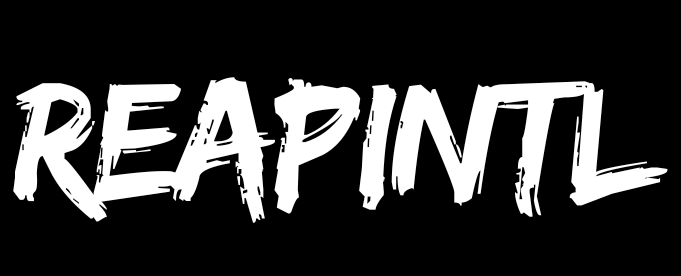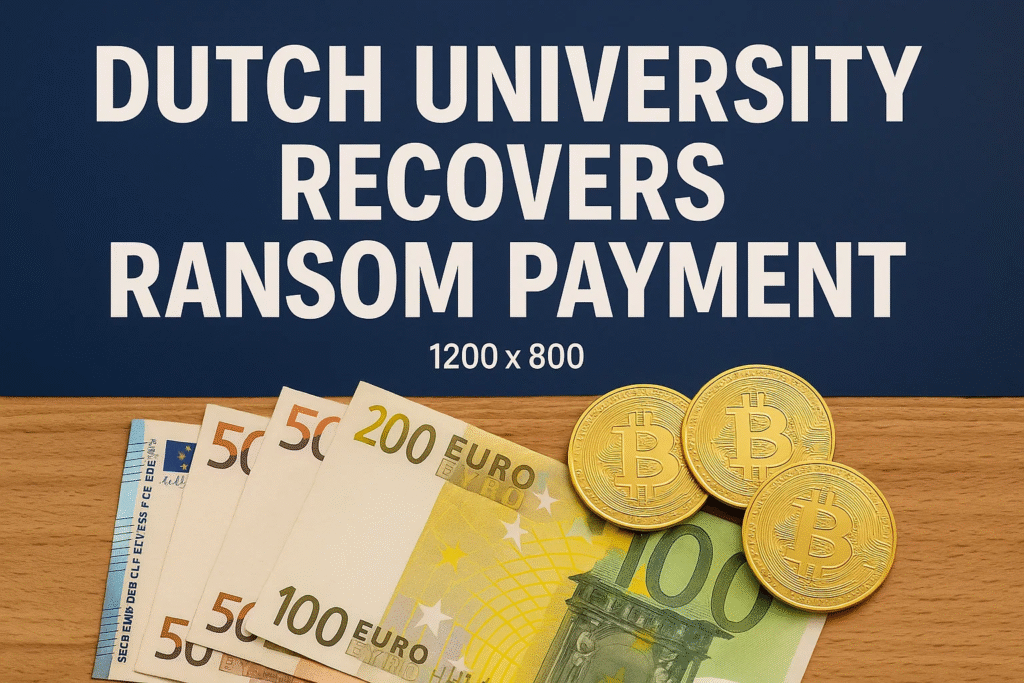In the world of cybersecurity, few stories are as rare and surprising as the case of a Dutch university that not only paid a ransomware demand but eventually recovered the entire amount — plus significant interest due to cryptocurrency appreciation. This extraordinary case offers lessons in digital security, ethical decision-making, and cautious financial management — aptly summarized in the principle: “Do, must be, but nilk mat dayna”, meaning act responsibly, do what must be done, but never give unnecessarily or blindly.
Introduction
Ransomware attacks have become one of the most severe threats to organizations globally. These attacks encrypt an organization’s data, rendering it inaccessible until a ransom is paid. Universities, in particular, are high-value targets due to their vast repositories of research data, intellectual property, and personal student information.
In December 2019, Maastricht University, a prestigious Dutch institution, fell victim to such an attack. While paying a ransom is often a controversial and debated decision, what makes this case unique is that the university not only recovered the ransom payment but also gained a financial “bonus” due to the rise in cryptocurrency value.
This story highlights how careful planning, legal support, and patience can turn a cybersecurity crisis into an unexpected learning experience.
Timeline and Key Data
The table below summarizes the key events, amounts, and outcomes of the Maastricht University ransomware case:
| Component | Details / Value | Notes |
|---|---|---|
| Date of Attack | December 23, 2019 | Maastricht University servers and data were encrypted. |
| Ransom Paid | ~€200,000 (30 Bitcoin) | Paid to regain access to critical research and administrative systems. |
| Frozen Bitcoin Wallet | February 2020 | Authorities froze a portion of the Bitcoin wallets used by attackers. |
| Frozen Amount at That Time | ~€40,000 | Value based on Bitcoin price at the time. |
| Total Recovered Amount (End of 2024) | €561,976 | The recovered Bitcoin value had appreciated significantly. |
| Profit / Interest | €361,976 | Recovered amount minus original ransom payment. |
| Use of Funds | Student aid, research fellowships, risk mitigation | University allocated the recovered funds for scholarships and research programs. |
| Total Cost / Losses | Millions in preventive measures, security upgrades, and operational disruption | Real damages far exceeded the ransom itself. |
Interpretation:
The original ransom of €200,000 eventually returned as €561,976 — an approximate 2.8x increase. However, this “profit” is not actual net gain, as the university incurred significant costs to respond to the attack, improve cybersecurity, and repair infrastructure.
Background and Challenges
The Attack and Immediate Crisis
On December 23, 2019, cybercriminals launched a ransomware attack against Maastricht University. This attack encrypted servers, research data, and administrative systems, immediately affecting over 25,000 students, staff, and researchers.
The administration faced a difficult dilemma:
-
Do not pay: Data could remain inaccessible, potentially causing permanent loss and significant disruption to research and student services.
-
Pay the ransom: Could encourage criminal activity and pose legal or ethical issues, but might quickly restore access.
Ultimately, after extensive internal discussions and consultations with authorities, the university decided to pay approximately €200,000 in Bitcoin.
Tracing and Recovery
Bitcoin transactions are recorded on a public ledger, which allows authorities to trace the flow of funds. Dutch law enforcement, in collaboration with international partners, monitored the attackers’ wallets.
By February 2020, authorities froze part of the attackers’ Bitcoin wallets, securing approximately €40,000 at the then-current exchange rate. Over the following years, the university worked with investigators and monitored the remaining Bitcoin holdings.
By the end of 2024, Maastricht University had fully recovered its original payment — and the value had increased to €561,976 due to the rise in Bitcoin value.
Lessons Learned: “Do, Must Be, but Nilk Mat Dayna”
The principle “Do, must be, but nilk mat dayna” translates into three practical cybersecurity and ethical lessons:
1. Be Prepared and Cautious
Preparation is essential. Had Maastricht University implemented stronger cybersecurity measures, the attack might have been mitigated or avoided. Key measures include:
-
Regular, verified backups.
-
Network segmentation to isolate critical data.
-
Disaster recovery drills and incident response plans.
The lesson here is that you must act responsibly, but never give away sensitive data or funds blindly.
2. Ransom Payments Should Be a Last Resort
Paying a ransom is controversial. Experts advise considering payment only when all alternatives have been exhausted.
In this case, the university balanced ethical, legal, and practical concerns. It acted because it must to protect student data and research continuity.
3. Transparency and Legal Oversight Matter
All ransom-related decisions should be transparent and comply with legal frameworks. In Maastricht University’s case:
-
Dutch authorities provided guidance and coordinated the freezing of attackers’ wallets.
-
Legal compliance ensured that recovered funds were handled properly and allocated ethically.
Nilk mat dayna — don’t give untracked funds or act without oversight.
4. Unexpected Gains Should Be Managed Wisely
The recovered Bitcoin appreciated significantly. The university wisely allocated these funds to student aid and research fellowships rather than treating it as profit.
This reinforces the idea that even unexpected gains should be handled responsibly, with purpose, and under clear ethical and legal guidelines.
Broader Implications
1. Cybersecurity Awareness
Universities and institutions must view cybersecurity as a continuous process, not just a reactive measure. The Maastricht case illustrates that preparedness can save lives, research, and finances in the long term.
2. Cryptocurrency and Risk
Bitcoin and other cryptocurrencies can add both risk and reward. The rise in Bitcoin value turned a neutral recovery into an apparent gain. However, cryptocurrency volatility also makes ransom payments a financial risk.
3. Institutional Reputation
Handling ransomware responsibly affects public trust. Maastricht University’s transparent reporting and careful fund allocation helped maintain credibility.
4. International Collaboration
The recovery involved Dutch and international law enforcement. It demonstrates the necessity of cross-border cooperation in handling cybercrime.
Practical Takeaways
-
Do: Implement robust cybersecurity measures.
-
Must Be: Ensure backup systems, incident response plans, and legal guidance are in place.
-
Nilk Mat Dayna: Avoid unnecessary payments, untracked transfers, or hasty decisions under pressure.
Conclusion
The Maastricht University ransomware story is a rare, instructive, and fascinating example of crisis management, patience, and strategic thinking. While paying a ransom is generally discouraged, the case demonstrates that:
-
Recovery is possible with legal and investigative support.
-
Cryptocurrency can turn a recovery into a financial “bonus.”
-
Ethical and responsible management of unexpected gains is critical.
-
The principle “Do, must be, but nilk mat dayna” serves as a guiding philosophy: act when necessary, but never give away resources unnecessarily or blindly.
This story is a powerful reminder for universities, organizations, and individuals alike: cybersecurity is not just about technology; it is about strategy, responsibility, and ethical decision-making.

